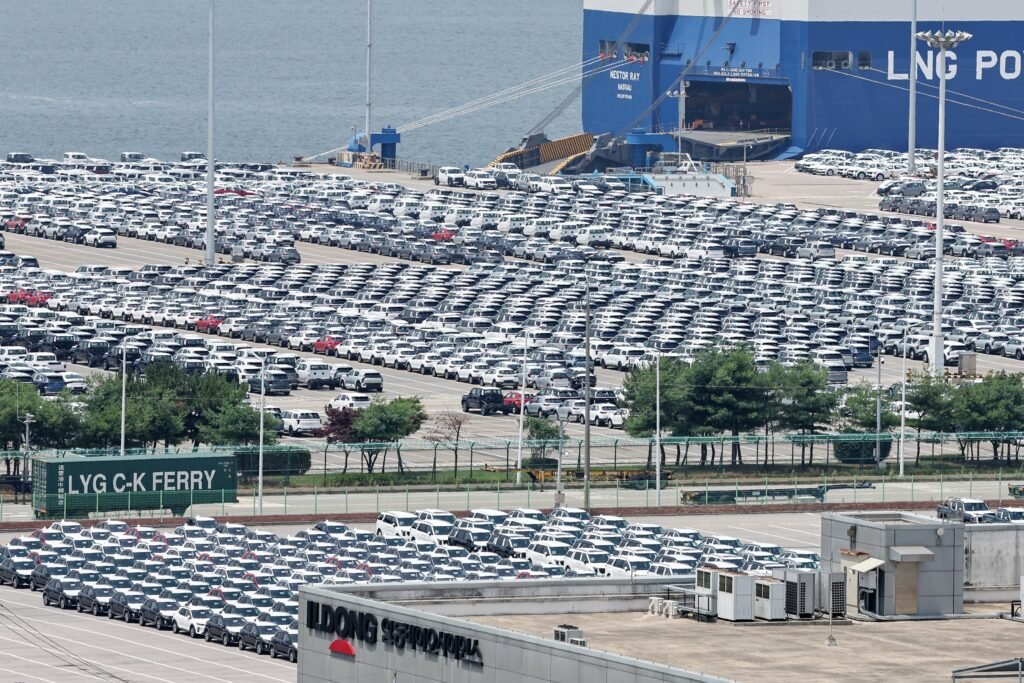South Korea Faces Economic Risks from Potential U.S. Tariff Measures
South Korea’s economy could experience a significant downturn if the United States proceeds with its planned reciprocal tariffs starting August 1. A recent analysis by a government-affiliated research institute highlights that real GDP could shrink by as much as 0.4% under such circumstances. This warning comes amid ongoing discussions between the two nations regarding potential tariff adjustments before the deadline.
At a public hearing held on June 30, Kim Young-gui, a senior research fellow at the Korea Institute for International Economic Policy, outlined the potential impact of the U.S. trade measures. He stated that South Korea’s real GDP might decline by 0.3% to 0.4% if the proposed tariffs are implemented. The U.S. is considering imposing a 25% tariff on South Korean goods, alongside additional duties on cars, steel, and semiconductors. These measures are part of broader trade tensions between the two countries, which have been negotiating ways to adjust the tariffs ahead of the August 1 deadline.
Kim emphasized that the implementation of these tariffs could lead to a “structural loss” for the Korean economy, particularly in the context of existing economic challenges. His assessment did not take into account the recent agreement between the U.S. and Japan, which reduced tariffs on Japanese goods from 25% to 15%. Given that South Korea competes directly with Japan in key sectors like automobiles and electronics, this development could further undermine South Korea’s export performance and overall growth.
The potential imposition of a 25% tariff would likely exacerbate South Korea’s already weak growth outlook. The Bank of Korea, in its forecast released on July 24, assumed a 15% reciprocal tariff rate—similar to Japan’s—predicting that this year’s growth would remain near its May estimate of 0.8%, albeit slightly weaker. However, if the full 25% tariff is enforced, GDP growth could drop even closer to zero, signaling a severe economic slowdown.
Key Sectors at Risk
Several critical industries in South Korea are expected to be heavily affected by the potential tariffs:
- Automotive Industry: South Korea is a major exporter of vehicles, and the imposition of tariffs could reduce demand for its products in the U.S. market.
- Steel and Semiconductors: These sectors are vital to South Korea’s economy, and additional duties could increase production costs and reduce competitiveness.
- Electronics: With strong competition from Japan, any disadvantage in trade terms could hurt South Korean exports in this sector.
Broader Economic Implications
The potential tariff measures could also have ripple effects across the global supply chain. South Korea plays a crucial role in manufacturing and exporting high-tech components, which are integral to various industries worldwide. A decline in South Korea’s economic performance could therefore affect international trade flows and investment patterns.
Moreover, the uncertainty surrounding the U.S.-South Korea trade negotiations adds to the economic instability. Businesses and investors may hesitate to make long-term commitments, fearing potential disruptions caused by the tariffs. This uncertainty could further dampen consumer and business confidence, leading to slower economic activity.
Possible Outcomes and Responses
In response to these concerns, South Korea may explore alternative strategies to mitigate the impact of the tariffs. This could include diversifying its export markets, strengthening trade relationships with other countries, and investing in domestic industries to reduce reliance on foreign markets. Additionally, the government may consider implementing supportive policies to cushion the economy during this period of uncertainty.
As the August 1 deadline approaches, both countries will need to find a balanced solution that addresses trade imbalances without causing undue harm to either economy. The outcome of these negotiations will be closely watched by economists, businesses, and policymakers around the world.

